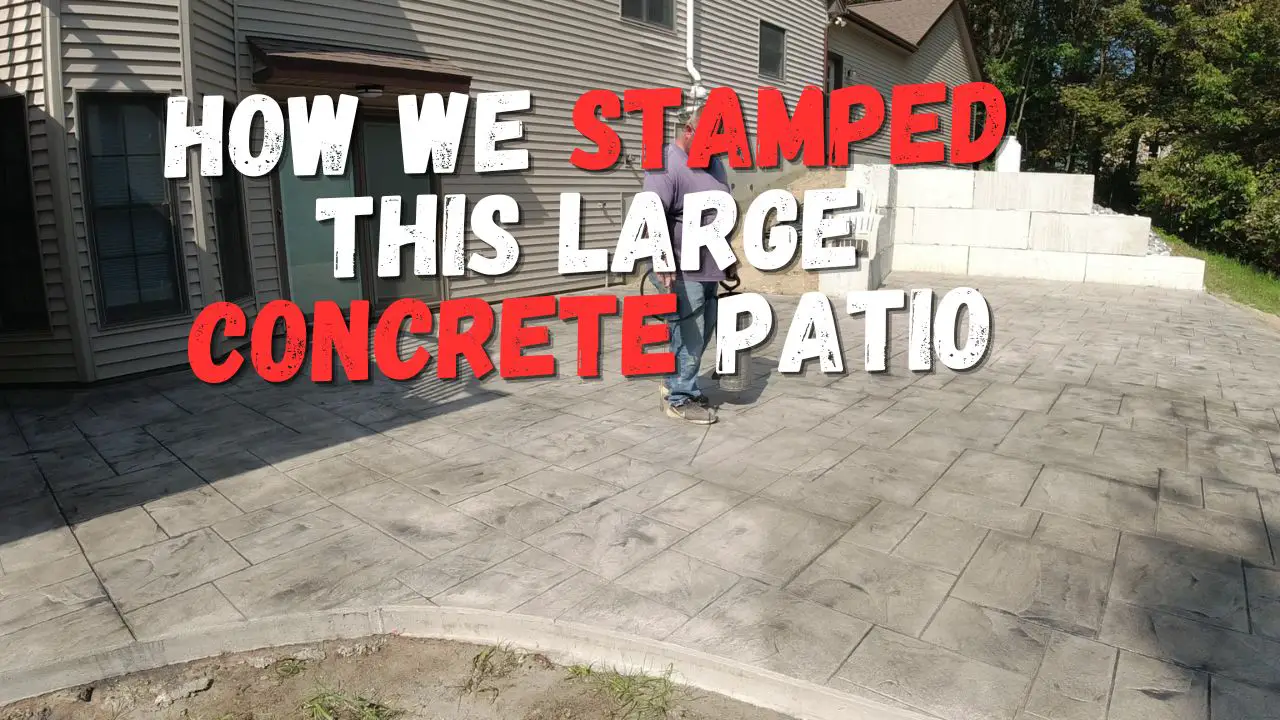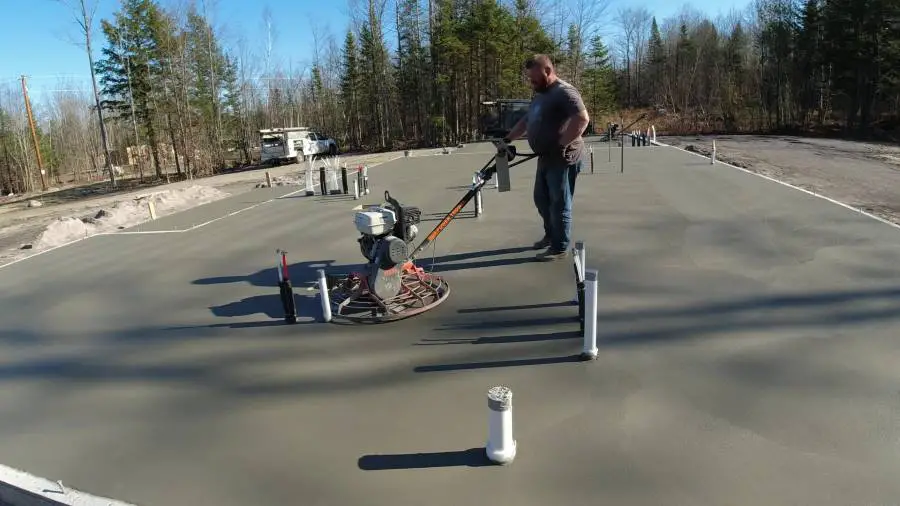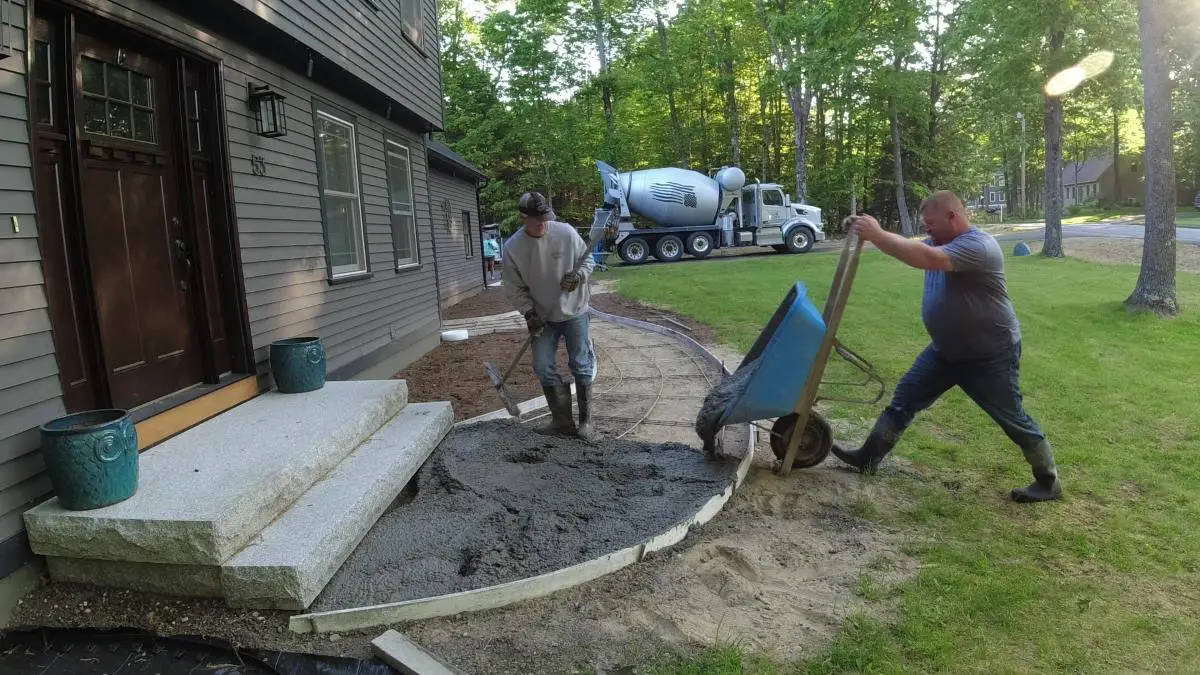DIY Guide: Removing Concrete Sealers
and Preparing for Resealing
Are you planning to reseal your concrete surface, but unsure of how to remove the old sealer first?
Don't worry, you're not alone. Removing concrete sealers can be a daunting task, but with the right knowledge and tools, you can do it yourself and prepare your surface for resealing.
In this DIY guide, we will take you through the step-by-step process of removing concrete sealers, including tips on identifying the type of sealer, using the right chemicals and tools, and preparing your surface for a new sealer application.
Whether you're a DIY enthusiast or a homeowner looking to save money on contractor fees, this guide is for you.
So let's get started on removing those old sealers and preparing your concrete surface for a fresh new look.
What type of sealer are you removing
First,to remove a concrete sealer accurately, you need to determine the type of sealer that was initially applied.
How to test if concrete is sealed with a water-based or solvent-based sealer:
To see whether a concrete surface was sealed with a water-based or solvent-based sealer, apply a small amount of Xylene on an area that still has the previous sealer coating.
Let it sit for 20 seconds, wipe up any excess, then wearing rubber gloves touch the area.
If it feels tacky or sticky, then the surface was sealed with a solvent-based sealer. Conversely, if it doesn't feel tacky or sticky, then the surface was sealed with a water-based sealer.
methods used to remove concrete sealers
The three most popular methods for removing concrete sealers are using a chemical stripper, pressure washing, or by grinding / sanding .
All three methods have some advantages and disadvantages, and the choice between the three will depend on the type of sealer and the condition of the concrete surface.
Method 1: Chemical Stripper
A chemical stripper is a solvent-based product that's designed to break down and dissolve the sealer on the concrete surface.
The stripper is applied to the surface, left to sit for a certain amount of time, and then removed using a scraper or pressure washer.
The advantages of using a chemical stripper are that it can be used on all types of sealers and is effective for removing stubborn, deeply penetrated sealers.
However, chemical strippers are typically more expensive, kind of messy, and may require multiple applications, making the process tedious and more time-consuming.
Here are the steps to using a chemical stripper:
- Clean the surface: Remove any debris or loose dirt from the concrete surface using a broom, leaf blower, or vacuum cleaner. Ensure the surface is completely dry before applying the stripper.
- Apply the stripper: Follow the manufacturer's instructions and apply the stripper evenly to the surface using a brush or roller.
- Allow the stripper to work: Let the stripper dwell on the surface for the recommended time, usually around 30 minutes to an hour.
- Remove the sealer: Use a scraper to remove the sealer from the surface. You can also use a pressure washer, a floor buffer, or a wet vacuum to remove stubborn areas.
- Rinse the surface: Rinse the surface thoroughly with water to remove any remaining stripper or sealer residue.
- Allow the surface to dry: Wait for the surface to dry completely before applying a new sealer.
Method 2: Pressure Washer
By using a pressure washer, you can remove water based and some solvent based sealers from the concrete surface by blasting away the sealer.
The advantages of using a pressure washer are that it's usually faster and less expensive than using a chemical stripper.
However, it may not be as effective at removing deeply penetrated, and thicker concrete sealers.
Here are the steps to using a pressure washer:
- Clean the surface: Remove any debris or loose dirt from the concrete surface using a leaf blower, broom or vacuum cleaner.
- Pressure wash: Using the wand of the pressure washer and a fan type tip, move the wand in a back and forth or circular motion.
- Blast and lift away the sealer: Set the pressure washer to a high pressure and spray the surface, it might take multiple times, you should be able to see the sealer lifting away from the concrete.
- Rinse the surface: Rinse the surface thoroughly with water to remove any remaining sealer or residue.
- Allow the surface to dry: Wait for the surface to dry completely before applying a new sealer.
Caution: Don't get the tip of the wand too close to the surface of the concrete as it may damage the concrete.
method 3: mechanically removing
Mechanical methods can also be used for removing concrete sealers, but they are less popular than chemical strippers or pressure washers.
Mechanical methods involve using a walk behind or hand held grinder to physically grind or sand away the sealer from the concrete surface.
The advantages of using mechanical methods are that they are better at removing thicker epoxies or stubborn sealers and can also be used for preparing the surface for resealing.
However, mechanical methods can be time-consuming and can cause damage to the concrete if they're not used correctly.
Here are the steps to using a mechanical method:
- Clean the surface: Make sure the surface is completely clean and dry before using the mechanical tool. Use a leaf blower or vacuum to clean the concrete.
- Choose the right tool: Select the right grinder or sanding tool depending on the condition of the surface and the thickness of the sealer. For example, a diamond grinder can be used for thick or stubborn sealers, while a sanding disc on a buffer machine can be used for preparing the surface for resealing.
- Use the tool correctly: Follow the manufacturer's instructions and use the tool correctly. If you rent the grinder, get a demonstration from the renter. Always wear protective clothing, gloves, goggles, and a respirator mask.
- Remove the sealer: Use the machine or tool to grind or sand away the sealer from the surface. Being careful not to damage the surface of the concrete.
- Clean the surface: Remove any remaining residue using a pressure washer or a floor buffer.
- Rinse the surface: Rinse the surface thoroughly with water to remove any remaining sealer or residue.
- Allow the surface to dry: Wait for the surface to dry completely before applying a new sealer.
the three Types of chemical concrete sealer removers
When you're removing concrete sealers, paint, latex, enamel, epoxy, and polyurethanes from concrete there are three basic types of chemical strippers.
I'm not a big fan of the caustic strippers, but I do have recommendations for the biodegradable and solvent based sealer removers.
Biodegradable concrete paint strippers
Biodegradable strippers are made from natural plant material. They are much safer for you and the environment than other chemical strippers.
The active ingredients found in biodegradable strippers are typically acids or esters derived from plants. Common plant sources include pine oil, corn sugars, citric acid and soy oil.
They usually take longer and may require more applications than some of the other chemical strippers but are easier to use, have less odor, are safer for the environment, and clean up & disposal of the by product is usually easier.
The best, 100% biodegradable, concrete cleaner - paint stripper- adhesive remover that I have used is Novion Universal Concrete Cleaner.
This concrete sealer remover is non-toxic, non-corrosive, and non-hazardous to you, your pets, and your plants.
Another good biodegradable sealer remover is Nock-Off by DecoCRETE Supply Co.
Solvent based concrete paint strippers
Solvent based strippers are the most common types of strippers used when removing concrete sealers. They usually work faster and you don't have to use as much product as other strippers.
Look for ones that contain the chemical Methylene-chloride. This is the most popular and will remove most all types of sealers from concrete.
Other types of solvent strippers include N-methylpyrrolidone (NMP), dibasic esters (DBEs) and combinations of Xlyene, acetone, alcohol and toluene.
Solvent strippers only work if you keep the surface wet, don't let the stripper dry out or evaporate.
You may have to re-wet the surface with the stripper a couple of times before you can remove the sealer.
Most solvent based strippers are aggressive enough to remove almost all types of coatings and sealers from concrete.
Common resins used in sealers like acrylic, epoxy, polyurethane, polyaspartic and polyurea are no match for a good solvent based chemical concrete stripper.
For safety: Keep in mind solvent based strippers are very flammable. They can cause severe skin irritation breathing the fumes over long periods of time could cause liver problems.
Always wear a mask and make sure there is good ventilation.
The solvent based stripper I use to remove paint and sealers from concrete is Klean Strip Xylene.
It penetrates through the paint/sealer and bubbles it off for easy removal, far better than any other stripper I have used.
Caustic concrete paint/sealer strippers
Caustic chemical strippers are made from powerful alkaline chemicals. The high pH of the alkaline causes the break down of the sealer, allowing for moderate to easy removal from the surface of the concrete.
Caustic strippers are a good for removing latex, alkyds or enamel paints from concrete.
They are not a good choice for removing acrylic concrete sealer, epoxy, polyurethane, or polyaspartic coatings because these coatings have good chemical resistance to caustic chemicals.
The temperature should be above 50 degrees and plan on applying quite a few times to completely remove the coating.
One advantage to using a caustic stripper is it's less harmful and easier to handle than solvent-based strippers.
Once the stripper has done its job, a light pressure wash and neutralizing rinse is required to remove the coating and any remaining stripper to prepare the concrete for the next process.
Make sure to dispose of the waste material properly, as caustic strippers tend to stay active and can react with other chemicals even after they are removed from the concrete.
A good caustic sealer remover is Klean-Strip Sealer stripper.
how to choose the right sealer remover for your project
What type of sealer are you trying to remove?
Choosing the right chemical stripper for a concrete sealer removal project depends on several factors, with the most important being the type of sealer or coating to be removed.
Matching the strength of the stripper to the strength of the sealer is crucial for efficiency.
Thicker polyurethane and epoxy-based sealers require a more aggressive solvent-based stripper, while thinner acrylic-type sealers can be removed using a biochemical or caustic stripper.
For those who are unsure of the type of sealer used, basic guidelines include determining whether the concrete surface is inside or outside and the thickness of the sealer or coating.
Thinner sealers tend to be acrylics or enamels, while thicker sealers are usually high-performance epoxies or polyurethane-based systems.
how bad is your existing sealer
To remove concrete sealer, it's important to first identify the type of sealer, or at least categorize it as acrylic or non-acrylic.
Next, consider the condition and thickness of the sealer. If the sealer is in good shape and adhering well to the concrete, an aggressive solvent-based stripper is necessary for removal.
However, for loose, flaking, white or failing sealer, a less-aggressive biochemical stripper may suffice.
what area / location are you removing the sealer from
When selecting a concrete stripper, it's essential to consider the location and environmental impact of the product on surrounding structures, plant life, and people.
Safety should always be a top priority. Solvent-based strippers generate flammable fumes and strong odors and should not be used indoors or in areas with sparks or open flames.
They can also be hazardous to people working or living nearby, and may contaminate water sources and kill plant life.
In contrast, eco-friendly biochemical strippers are an excellent alternative for these situations.
Although solvent-based strippers have been used successfully in public areas, proper safety measures, adequate ventilation, and site management are essential.
removing the sealer and disposing of it
After using a chemical stripper to remove concrete sealer, the residue left behind must be removed.
On smooth concrete, a flat blade scraper is the best tool for the job, while textured or stamped surfaces require a stiff-bristle nonreactive scrub brush or broom.
After scraping or scrubbing, clean up the surface using soap and water, and consider using hot water and a high-pressure washer to remove any remaining residue.
Dispose of the waste in accordance with local and state environmental regulations.
follow the instructions
All types of sealer removers and chemical strippers have instructions on how to use them printed on the container.
For the safest and in most cases the best results, follow the instructions carefully!
You don't want to harm yourself or your concrete by not following and doing what the maker of the product recommends.
Tips for using a chemical stripper sealer remover
Here are some tips to help you use chemical strippers safely and effectively:
- Wear protective clothing: Chemical strippers can be hazardous to your health, so it's important to wear protective clothing, including gloves, safety goggles, a respirator mask, and appropriate clothing.
- Choose the right stripper: Choose a stripper that is appropriate for the type of sealer you are removing and follow the manufacturer's instructions carefully.
- Keep the stripper active: Prevent the stripper from drying out by covering the area with damp burlap or cotton sheets. Avoid exposing outdoor areas to direct sunlight or wind, and place a plastic sheet over the cotton or burlap to prolong the active life of the stripper.
- Apply the stripper evenly: Apply the stripper evenly to the surface using a brush or roller. Avoid applying too much stripper or overworking the area.
- Wait for the stripper to work: Allow the stripper to work for the recommended time, usually around 30 minutes to an hour. Do not let the stripper dry out.
- Remove the sealer: Use a scraper to remove the sealer from the surface. You can also use a pressure washer or a floor buffer to remove stubborn areas.
- Rinse the surface: Rinse the surface thoroughly with water to remove any remaining stripper or sealer residue.
- Dispose of the stripper properly: Dispose of the stripper according to local regulations and manufacturer instructions. Do not pour it down the drain or in the trash.
By following these tips, you can safely and effectively use a chemical stripper to remove concrete sealer.
Remember to always wear protective clothing, follow the manufacturer's instructions, and dispose of the stripper properly.
faq's
Here are 10 frequently asked questions and answers about removing concrete sealers:
- Q: How do I know if my concrete has a sealer on it? A: Pour a small amount of Xylene on the surface and wait for 20 seconds. If it becomes tacky or sticky, it likely has a solvent-based sealer, while no change indicates a water-based sealer.
- Q: What's the best way to remove a concrete sealer? A: The most common methods are chemical stripping, mechanical grinding, or pressure washing. The best option depends on the type of sealer, the condition of the concrete, and other factors.
- Q: Can I remove a sealer from concrete by sanding? A: Sanding is not a recommended method for removing a sealer, as it can create dust and cause damage to the surface.
- Q: Can I use a pressure washer to remove a concrete sealer? A: Yes, pressure washing can be an effective method for removing a sealer, but it may not work for all types of sealers or concrete surfaces.
- Q: Is it safe to use chemical strippers to remove concrete sealers? A: Chemical strippers can be hazardous to your health, so it's important to follow safety precautions and manufacturer instructions carefully.
- Q: How long does it take to remove a concrete sealer? A: The time required to remove a sealer depends on several factors, such as the type of sealer, the condition of the concrete, and the method used.
- Q: Can I reuse the stripper solution to remove another sealer? A: It's not recommended to reuse the stripper solution, as it may be contaminated with dissolved sealer and may not work as effectively.
- Q: Can I dispose of the used stripper and sealer residue in the trash? A: No, it's important to dispose of the used stripper and residue in accordance with local and state environmental regulations.
- Q: Do I need to remove all the sealer before reapplying a new sealer? A: Yes, it's important to remove all the old sealer before applying a new one to ensure proper adhesion and a smooth finish.
- Q: Can I remove a sealer from concrete myself, or do I need to hire a professional? A: Removing a sealer from concrete can be a DIY project, but it's important to research and plan carefully, and seek professional help if unsure about any aspect of the project.
SOME OTHER PAGES THAT MIGHT INTEREST YOU:
What can I use to strip concrete sealer?
My 5 best ways to remove concrete sealers.














